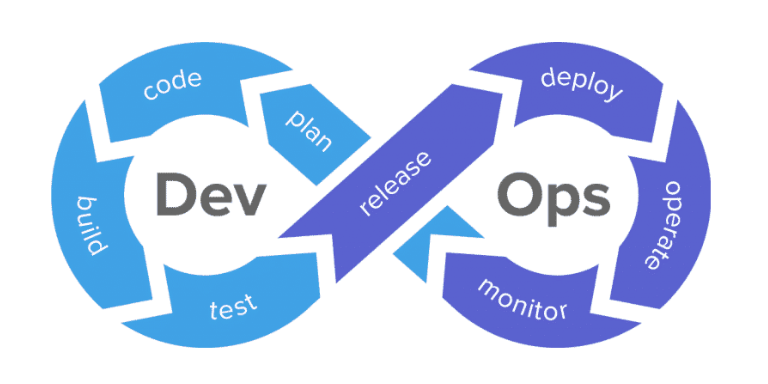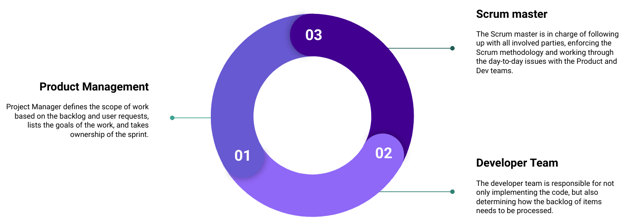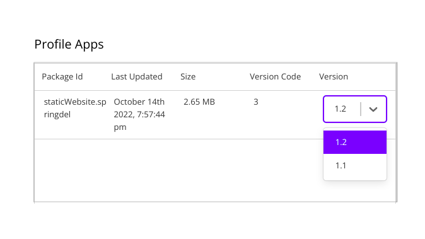MDMs Help DevOps Workflows

For years, traditional device management has been reduced to securely restricting device environments in order to simplify operations and increase productivity for task workers.. This use case still exists across multiple industries - including education, medical, logistics, POS–but device and software capabilities have risen substantially in recent years, and so has the number of cases. One solid case for a modern MDM, when done well, is for DevOps teams looking to implement, scale, and push updates within seconds to thousands or more devices across multiple locations.
Here’s how it’s done:
Modern DevOps
Among the tech news industry and enterprise service providers, the term DevOps has become a buzzword to help symbolize IT modernization and improvement. At its heart, DevOps focuses on bridging the gap between software developers and IT administrators by breaking up large lift-and-shift upgrades into more manageable, and more frequent updates. First coined by Patrick Dubois in 2009, DevOps recognizes the frequent problem that large scale updates and upgrades often take a huge toll on developer and QA teams, and it is in the best interest to help breakdown updates.1 Now in 2023 there are multiple tools, trends, and methodologies to achieve these results, including, but not limited to, serverless architecture, microservices, GitOps, and Agile project management.
If these terms sound abstract or out-of-reach, they probably are for your organization. Afterall, to bridge gaps between developers and IT implies that both teams exist in an organization. In many shops, businesses, and enterprises, however, there is often no separation between the technical support staff. Most organizations are not developing all of the tools used by staff and employees, but the same requirements of frequent updates, agile implementation, continuous testing and integration still do exist.
For organizations with a full stack of developers and IT professionals, or small shops looking to deploy some POS systems, a modern MDM helps enable the implementation of DevOps methodologies without the need for deep industry knowledge or full access to the source code of everything being deployed. With a modern solution ready for scale and with a global presence, the foundation for managing and pushing applications is already built with serverless infrastructure, automatic versioning, and roll-forward and roll-back capabilities. As such, helping organizations stay modern and compliant with the latest DevOps standards without any more than saying there is another device in a different location.
Harness the Agility of Scrum
At the heart of the Agile project management methodology is Scrum. Scrum is an efficient way to break down complex projects into manageable, actionable tasks across different teams. At the heart of this idea is the Sprint defined as “the heartbeat of Scrum, where ideas are turned into value.”2 The Scrum team involved in the Sprints is loosely outlined in the diagram below:

As detailed in The Scrum Guide, updates are designed to be broken down into monthly or shorter sprints to ensure maximum effectiveness and focus among the project/product management, developer, and Scrum master members.3 The three members make up the core of the Scrum Team and help push solution development and implementation forward feature-by-feature, sprint-by-sprint.
A modern MDM can help manage and facilitate the Scrum workflow by separating actual device groups into defined clusters to test and develop. With infinite groupings of devices and even teams, organizations with monolithic or diverse teams of developers can isolate, develop, and test across managed environments before rolling out to production. Once ready, changes can be pushed out to the production devices. Moreover, with intelligent versioning and user activity tracking, changes can be tracked in the MDM environment for easy auditing and oversight.
Indeed, a modern MDM maps the device organization to the project developer cycle, providing the necessary environments to get the most from Agile and Scrum development practices.
Capitalize on the Latest Trends
At the heart of modern DevOps is the ability to allow developer and project management teams to work in a more agile manner - create, test, and push updates to production more quickly and in parallel to other teams and projects. Technology continues to evolve to help propel this trend forward. DevOps.com cites the following technologies to watch:4
- Serverless computing
- Microservices architecture
- Low-code / No-code Applications and Platforms
- DevSecOps
- Kubernetes and GitOps
- AI and ML
All of the above are table stakes for the likes of Google, Microsoft, Facebook, and Amazon. Indeed, the Big 4 IT giants are the purveyors of a lot of the infrastructure and solutions being used to modernize and define the direction that DevOps is taking. Smaller organizations, however, may have a more niche approach or a smaller focus than the behemoths with teams upon teams of individuals capable of developing tooling for the developers. Most organizations only have a single developer team, if they have a team at all.
While often overlooked, a modern MDM can help act and enable most if not all of the latest trends in DevOps for smaller organizations. Modern MDMs already take advantage of the same tooling with serverless infrastructure, automated build tools, microservices, Git, and even AI and ML technologies ready for clients to begin building a low-code / No-code approach to publish new applications across managed fleets. By choosing a next-gen, modern MDM, SMEs like grocery chains, ticketing platforms, or even school systems can get a lot of the same access to tooling that is coveted and promoted across the industry.

Moreover, a modern MDM needs to be able to apply modern technical management to legacy applications. One example would be intuitive versioning of applications being published to various device groups or fleets. With private cloud-based, or on-premise application repositories, organizations of any size get immediate access to application upgrades or even downgrades for fleets of a single device to 10,000+devices. Organizations with a modern MDM can roll forward or roll back for A/B testing, and take advantage of QA testing and CI/CD practices without having to implement all of the tooling and infrastructure themselves.
Modern MDMs Utilize and Enable Modern DevOps
Though the term MDM has been around since the early 2000s, the need to continually update, monitor, and adjust an MDM platform is just as relevant as it was then. Devices are growing in number and complexity, not shrinking. It is imperative that modern DevOps practices are applied for modern MDMs to keep pace and stay ahead of new market trends. When done correctly MDMs not only allow for device management and monitoring, but also open new use case possibilities to organizations.
Imagine a hotel chain looking to implement a custom wall panel displaying the time, local weather, and available services for each guest room. Previously, short of working with a device manufacturer directly, and committing to a huge inventory of custom built hardware, it would have been impossible to secure a fixed use device. In addition, such a device would need to be hard-coded from the factory, meaning that any change of application for this private, custom use case would need to be updated, and the hotel would need to re-flash firmware to the existing devices manually or wait for the next device shipment to test and implement.
Now imagine this scenario with the help of a modern MDM, which enables the use of on-the-shelf devices, rather than building a whole stock of devices with proprietary firmware. A modern MDM will also have the ability to deploy the applications required, and lock-down the devices in a secure kiosk ensuring similar if not better functionality. The kiosk can now run the latest version of the wall panel application that the hotel chain requires, without having to rely on manual flashing or OEM involvement. In addition, devices can run in various groups/fleets for A/B testing of the different versions of the applications–a boon for highly innovative departments. A QA fleet can also be employed to ensure quality before the next version of the application is released. Finally, the publication of the wall panel app upgrade can be pushed securely from a private repository to all of the devices in a single click.
Modern MDMs both employ and enable modern DevOps standards to not only improve their own application and product / device support, but also to help equip organizations with the tools they need to develop agile workflows. In so doing, more organizations than just the top tier software development companies, can leverage the Agile and Scrum methodologies to help focus efforts, quickly respond to technical issues, and take advantage of 21st century management practices.
-------------------------------------------------------------------------
1. Binod Anand, "The History of Devops", knowledgehut (12th Jan, 2023), https://www.knowledgehut.com/blog/devops/history-of-devops
2. Ken Schwaber and Jeff Sutherland, The Scrum Guide: The Definitive Guide to Scrum: The Rules of the Game, (2020), page 7.
3. Ibid., pages 5-7.
4. Ahana Pearl, “The Future of DevOps; Trends to Watch”, DevOps.com (july 2022), https://devops.com/future-of-devops-trends-to-watch/

